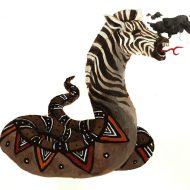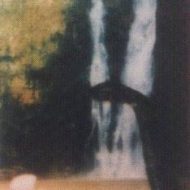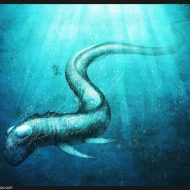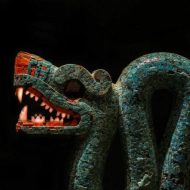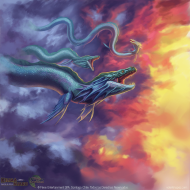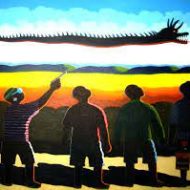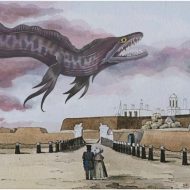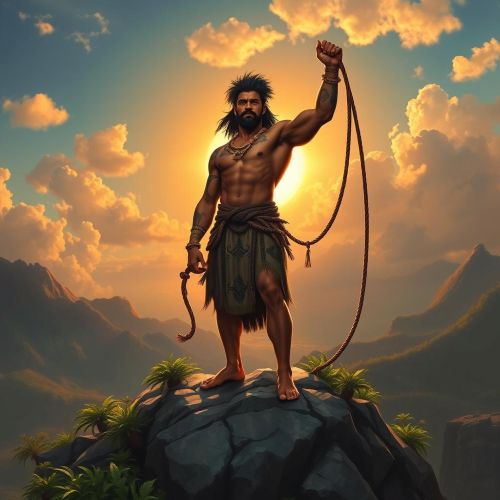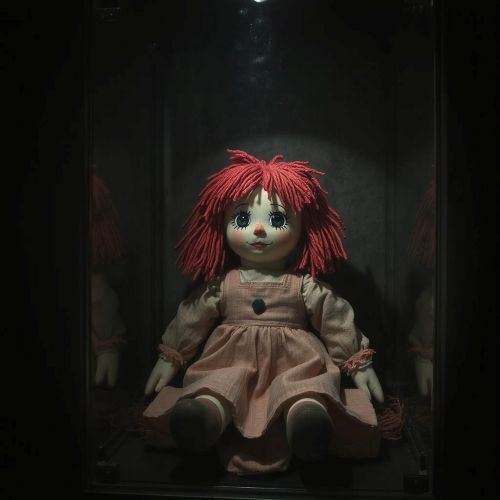Inkanyamba : The Giant Eel
At a glance
| Decription | |
|---|---|
| Origin | African Mythology |
| Classification | Hybrids |
| Family Members | N/A |
| Region | South Africa |
| Associated With | Storms, Rain, Thunder |
Inkanyamba
Introduction
In Zulu mythology, Inkanyamba is a revered yet fearsome figure, known as a colossal serpent inhabiting various South African regions, notably KwaZulu-Natal. This legendary creature, with a horse-like head, dwells in churning waters below waterfalls, embodying nature’s untamed fury. Local folklore depicts Inkanyamba as a powerful entity associated with storms and revered by tribes who believe it to be particularly active during the summer months. Its legend originates from ancient cave paintings in KwaZulu-Natal, linking it closely with rain symbolism in indigenous culture.
Physical Traits
The physical appearance of Inkanyamba varies in different accounts, yet certain characteristics remain consistent. Typically depicted as a massive serpent exceeding 20 feet in length, it resembles a large eel or snake. What sets it apart is its head, which varies in descriptions: some narratives depict a fierce horse head with a flowing mane, while others portray a more zebra-like appearance. Regardless, the equine head symbolizes its untamed power. Emphasizing its aquatic nature, Inkanyamba is often described with a finned mane along its back, symbolizing churning waters or stormy winds. Its immense size and invisibility contribute to its mystique and fearful reputation, as its presence is felt through the havoc it causes. Legends also describe its scales as iridescent, reflecting light like water. Inkanyamba is revered for its commanding presence and perceived control over aquatic forces.
Family
In Zulu mythology, Inkanyamba stands apart from many mythological creatures in that it is depicted as a solitary entity, a powerful spirit tied to waterfalls and the storms they generate. While some tales hint at the possibility of a mate, such as the belief among the Xhosa that Inkanyamba transforms into a tornado annually in search of a partner, these stories are less common compared to the prevailing image of the solitary serpent deity. Inkanyamba is part of a complex spiritual hierarchy in Zulu mythology, often associated with other water spirits and beings that collectively maintain natural balance.
Other Names
In South African folklore, Inkanyamba is known by several evocative names that highlight its formidable presence and close ties to the natural world. Among these titles, “Inkosanyama yamanzi” resonates as “Lord of the Waters” in Zulu, emphasizing its authority over rivers and waterfalls. This name underscores Inkanyamba’s role as a powerful spirit connected deeply with aquatic domains, where it is believed to dwell and exert influence. Another significant title, “Inkanyamba ye Nkosi yamangozi,” translates to “The Inkanyamba, the Lord of Storms,” directly linking the creature with its ability to control and even unleash violent weather phenomena. These names reflect the dual aspects of reverence and fear with which Inkanyamba is regarded in Zulu culture, capturing its mystique as both a protector and a harbinger of natural forces.
Across different regions and dialects, Inkanyamba is recognized by various names that further enrich its mythological identity. In some traditions, it may be referred to as Nkanyamba or Inkanyezi, highlighting celestial and aquatic connections respectively. These diverse names illustrate the multifaceted nature of Inkanyamba’s character within local communities, where it is revered for its immense size, mystical powers, and its role in maintaining natural balance. Each name carries its own cultural significance, reflecting the nuanced perceptions and interpretations of this legendary creature across South African folklore.
Powers and Abilities
In South African folklore, the Inkanyamba emerges as a powerful and enigmatic entity closely associated with the natural elements of water and storms. Its abilities are manifold and reflect its mythical stature within local traditions. One of its prominent attributes is the purported ability to control storms: according to Zulu beliefs, the Inkanyamba’s agitation can trigger violent summer storms, which are seen as both destructive forces and vital sources of life-giving rain. This connection to weather phenomena underscores its role as a formidable deity capable of influencing the environment in profound ways.
Described as an immense creature of great strength, the Inkanyamba is said to inhabit the churning waters beneath waterfalls, where its presence stirs up turbulence and creates havoc. Its size and power contribute to its depiction as a force of nature, embodying the raw energy and unpredictability of water. Additionally, the Inkanyamba is often portrayed as invisible, heightening its mystique and the fear associated with encountering such a powerful being. Its invisibility suggests a spiritual dimension, where its actions and effects on the physical world are more significant than its direct appearance.
In various legends, the Inkanyamba is also depicted as having spiritual connections, serving as a bridge between the living and ancestral spirits. This role positions it as a guardian or a conduit for divine justice, capable of both protecting and punishing communities. Its influence over water sources is considered pivotal, believed to impact the fertility of the land and the well-being of those who depend on these natural resources. Thus, the Inkanyamba embodies a complex blend of natural force, spiritual intermediary, and cultural symbol within South African mythology.
Modern Day Sightings
Since its first sighting by game ranger Andhelezi Buthelezi in 1962, the Inkanyamba has continued to intrigue and captivate both locals and visitors alike. Caretaker Johannes Hlongwane reported seeing the creature twice, in 1974 and again in 1981, while in 1995, restaurant owner Bob Teeney spotted it near Howick Falls. These sightings have contributed to the enduring legend of the Inkanyamba, enriching the tapestry of beliefs and folklore in South Africa. Today, the serpent god’s story remains a prominent cultural touchstone, influencing artistic expressions and serving as a subject of fascination for enthusiasts of mythology.
The majestic Howick Falls in KwaZulu-Natal are central to the Inkanyamba legend, believed by locals to be the creature’s dwelling place within its plunge pool depths. Visitors, whether driven by curiosity or reverence, often visit the falls, drawn by the allure of encountering the Inkanyamba or paying homage to its mythical presence. Beyond local folklore, the Inkanyamba has also permeated modern media and art in South Africa. It has been featured in literature, appearing in novels and short stories that delve into its mythical origins and its connection to the natural world. Artists frequently depict the Inkanyamba in sculptures and paintings, capturing its fearsome form and perpetuating its image across generations.
In contemporary South Africa, the legacy of the Inkanyamba endures through various mediums, blending traditional beliefs with modern interpretations. While rural communities maintain steadfast beliefs in its existence, the serpent god has also become a symbol in broader discussions about conservation and environmental stewardship. Its presence serves as a reminder of humanity’s complex relationship with nature, urging respect for its power and resilience. As South Africa navigates cultural evolution, the Inkanyamba remains a steadfast guardian of tradition and a testament to the enduring impact of myth and folklore on national identity.
Related Images
Frequently Asked Questions
What does Inkanyamba do?
According to local beliefs, the Inkanyamba rises to the sky looking for a mate causing destructive tornadoes and high winds. The male Inkanyamba rises from the deep rivers while the female Inkanyamba resides in deep pools or dams.
Can Inkanyamba fly?
The Inkanyamba has the power of flight which it uses to search for a mate who supposedly resides in deep pools and dams. Otherwise the Inkanyamba keeps to water bodies.
Is Inkanyamba a dragon?
The Inkanyamba can be mistaken for a dragon but experts claim that the Inkanyamba is more closely related to a giant sea snake or an eel.
Is Inkanyamba real?
According to legend, the Inkanyamba is a serpent that lives in a waterfall lake near Pietermaritzburg, South Africa. It’s commonly found in the Howick Falls.



